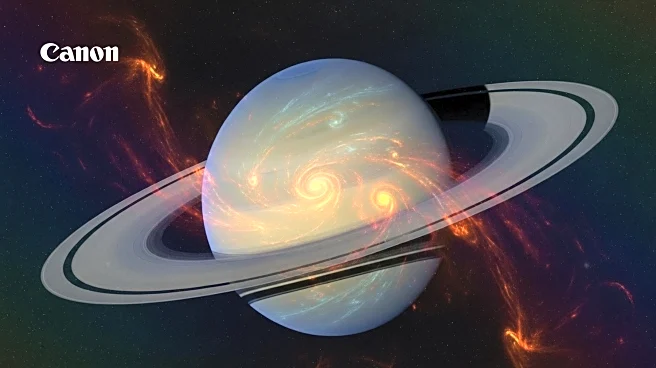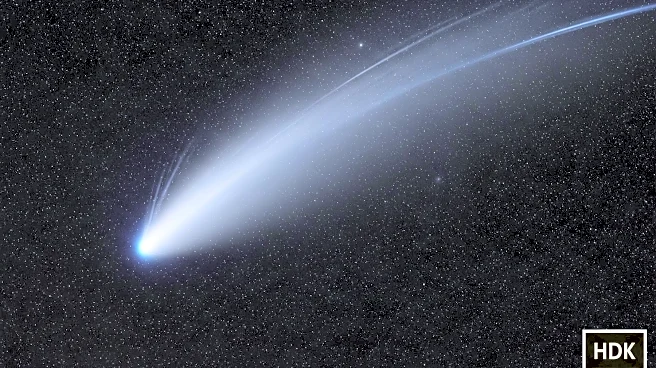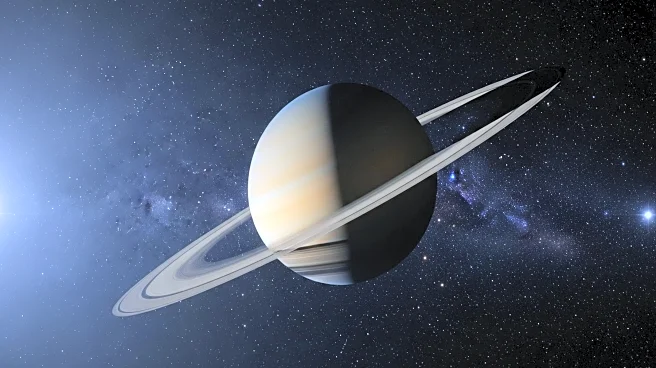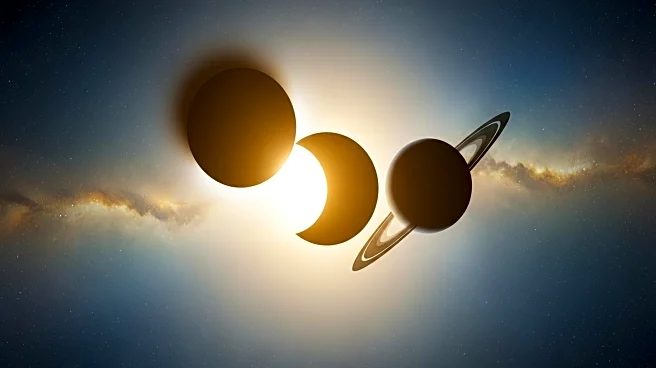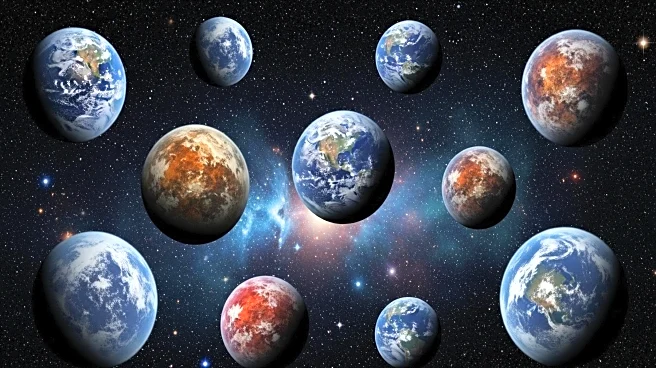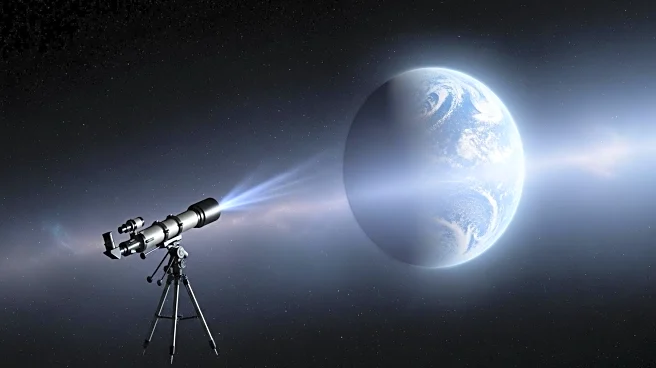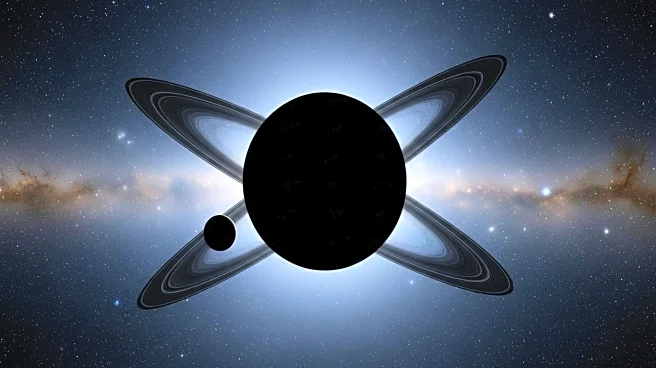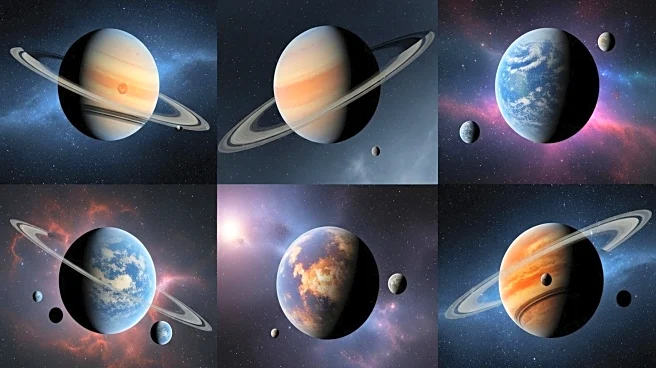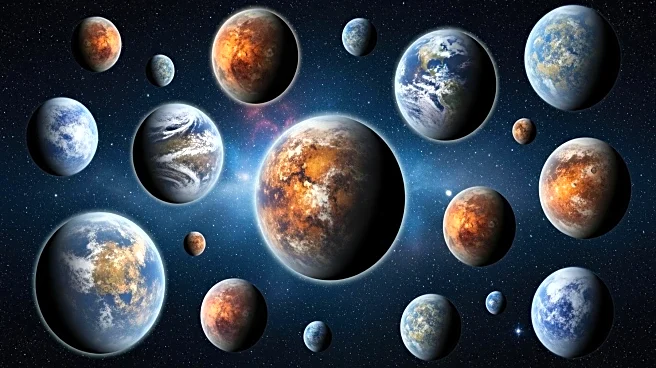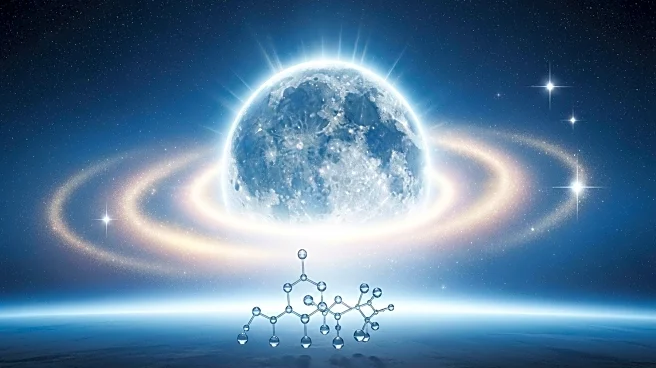What is the story about?
What's Happening?
Astronomers have identified unexpected bead and star patterns in Saturn's atmosphere using the James Webb Space Telescope (JWST). The discovery was made during a 10-hour observation period, focusing on infrared emissions from Saturn's aurora and upper atmosphere. Led by Tom Stallard from Northumbria University, the research team found fine-scaled patterns that appear interconnected despite being separated by large distances in altitude. These patterns were observed in Saturn's ionosphere and stratosphere, revealing dark bead-like features and asymmetric star patterns. The findings suggest complex interactions between Saturn's magnetosphere and atmosphere, potentially offering new insights into the planet's aurora and atmospheric processes.
Why It's Important?
The discovery of these patterns in Saturn's atmosphere is significant as it may enhance understanding of the planet's weather systems and atmospheric dynamics. The patterns could provide insights into energy exchanges driving Saturn's aurora, and the asymmetric star pattern might be linked to known atmospheric phenomena like the hexagonal storm pattern. This research could also inform studies of Earth's thermosphere, offering broader implications for planetary science. The use of JWST in this study highlights the telescope's capabilities in observing phenomena that are not detectable with ground-based telescopes, emphasizing the importance of continued space-based observations.
What's Next?
Future observations using the JWST are planned to confirm whether these atmospheric patterns are regular occurrences or isolated events. As Saturn is currently at its equinox, a rare event occurring every 15 Earth years, astronomers are keen to conduct follow-up studies during this period of seasonal change. These observations could reveal more about the atmospheric processes at play and potentially lead to new discoveries about Saturn's ionosphere and stratosphere. The research team stresses the urgency of these observations to capitalize on the unique conditions present during the equinox.
AI Generated Content
Do you find this article useful?
